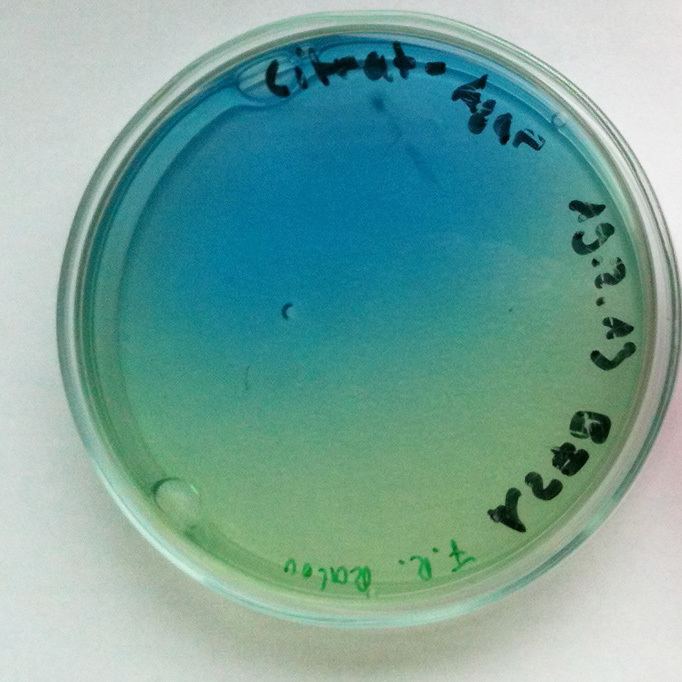 | ||
The citrate test detects the ability of an organism to use citrate as the sole source of carbon and energy.
Contents
Principle
Bacteria are inoculated on a medium containing sodium citrate and a pH indicator such as bromothymol blue. The medium also contains inorganic ammonium salts, which are utilized as sole source of nitrogen. Use of citrate involves the enzyme citritase, which breaks down citrate to oxaloacetate and acetate. Oxaloacetate is further broken down to pyruvate and carbon dioxide (CO2). Production of sodium bicarbonate (NaHCO3) as well as ammonia (NH3) from the use of sodium citrate and ammonium salts results in alkaline pH. This results in a change of the medium’s color from green to blue.
Bacterial colonies are picked up from a straight wire and inoculated into slope of Simmons citrate agar and incubated overnight at 37 °C. If the organism has the ability to use citrate, the medium changes its color from green to blue.
Examples:
Method
Inoculate Simmons citrate agar (do not inoculate heavily) by using straight wire from an 18- to 24-hour old colony. Inoculating from a broth culture is not recommended because the inoculum would be too heavy. Incubate at 35 °C for up to seven days.
Results
Positive : Growth on the medium even without colour change will be considered as positive. A colour change in the medium would be observed if the test organism produces acid or alkali during its growth. The usual colour change observed is from green (neutral) to blue (alkaline).
Negative : No growth observed.
